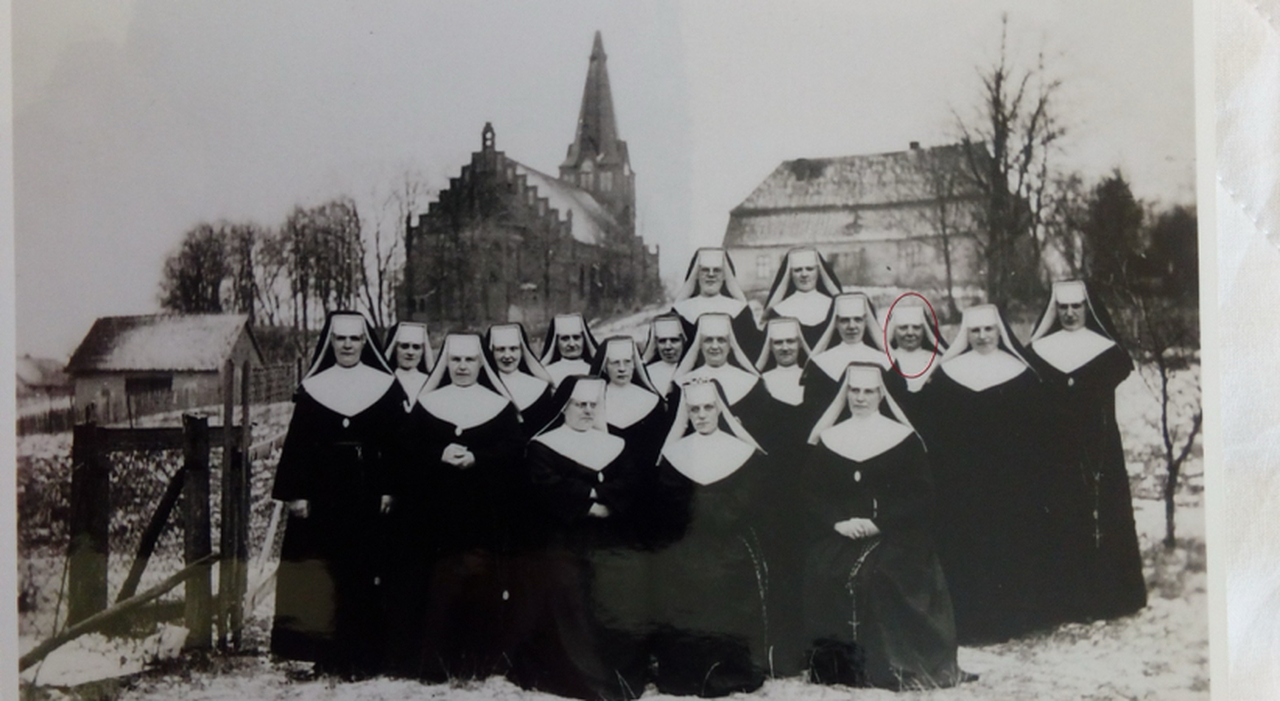Tuesday 26 March 2024, 16:42 - Last updated: 16:44
The few photographs – all extraordinary - have emerged from archives, found in yellowed folders, recovered thanks to the meticulous work of a Polish nun who for years has collected and assembled a mountain of material useful in giving a face and allowing the Vatican to recognize the sanctity and martyrdom of the nuns raped and brutally killed “in odium fidei” in January 1945, by the soldiers of the Red Army when they came to occupy East Prussia. The Soviet military were ruthless with Catholics, and in this case of martyrdom, rape was used as a tool to intimidate, de-Christianize the occupied territories, with the aim of annihilating the Catholic Church. “During the killing, the Servants of God were wearing their religious habit. The slain nuns lay on the ground, their veils had been torn from their heads. They were terribly bloodied. The Russians knew they were killing nuns. They said “Manaszka” (nun). I heard from lay people that the first Russians who came to the Prussian territories took particular vengeance against the nuns and the religious habit. They said: “Vatican”,” reads the documents preserved and handed over to Pope Francis, written by Sister Lucia Jaworska, the postulator who provided the photographic material capable of giving a face to those fourteen women courageous beyond all limits. Mother Christophora was the superior of the religious and was among the first to suffer a horrible fate. The same fate befell Sister Leonis who was then deported to Siberia where she died in June of that year, at only 32 years old, along with Sister Mauritia and Sister Tiburtia. Sister Sekundina and Sister Altegard, on the other hand, were found with their bodies torn to shreds and a bottle inserted into the neck of the uterus. They were still wearing the habit of the religious order of Saint Catherine Virgin. Sister Aniceta resisted as much as she could but was immediately hit by a rifle shot fired at point-blank range dying from blood loss. Some bodies were then buried in a mass grave, for others, however, the body has never been found. However, all the testimonies of the time have been collected and the memory has reached our days. The fourteen martyr nuns chose to stay in the convents and medical facilities so as not to fail to provide help to the exhausted civilians. The territory was in disarray. They were fully aware of the risks they would run. The reputation of the soldiers of the Red Army was well known. Most of the nuns of Saint Catherine managed to evacuate before the arrival of the soldiers. They crossed Germany and were saved. The Soviet military immediately stormed the convent and the hospital where the religious provided service, then heading into the basements and bunkers where some had taken refuge along with the doctors and the sick. No city where the nuns of Saint Catherine worked was spared: Guttstadt, Braunsberg, Gdansk, Heilsberg, Rastenburg, Wormditt, territories now Polish but after the invasion in 1939 by Hitler's army were annexed to Germany: West Prussia, Poznań, Upper Silesia, and the former Free City of Danzig. The Dicastery of Saints has stated that the martyrdom is clear and formal. “The sisters remained faithful to their vocation, accepting the risk, in order to stay beside the sick, the children, and the orphans. Even having had the opportunity to flee, as did other religious of the same Congregation, they remained at their post, striving for the good of their neighbor. The fame of martyrdom has remained constant over time, especially in the places where the events occurred and within the Congregation of belonging.”
© ALL RIGHTS RESERVED
This article is automatically translated
